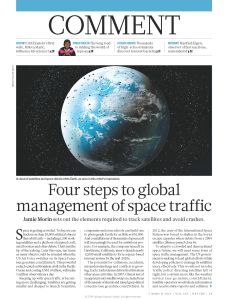
Four Steps to Global Management of Space Traffic
Jamie Morin sets out the elements required to track satellites and avoid crashes.
Recommendation
The satellites that you rely on for your weather forecasts, communication and navigation are in danger. They could collide with each other, or with one of the thousands of pieces of debris up there. Space expert Jamie Morin sketches a road map towards better managing these risks. Don’t expect a technological silver bullet in this levelheaded exposition of what needs to be done. Intensified tracking and large-scale information exchange should be able to prevent mayhem in orbit. The article will compel anyone fascinated by the evolving human infrastructure in space.
Summary
About the Author
Jamie Morin is the executive director of the Center for Space Policy and Strategy, part of the Aerospace Corporation. He is a member of the World Economic Forum’s Global Futures Council on Space Technology. At the US Department of Defense, he led the Air Force Space Board and Air Force Council.















Comment on this summary